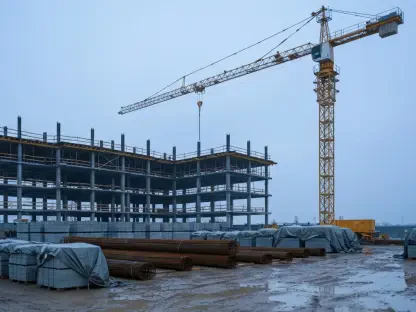In recent years, Australia has witnessed a mounting crisis in its housing market, characterized by insufficient supply and escalating prices, putting home ownership out of reach for many individuals. In response, the Australian government, both at the Commonwealth and state levels, has introduced a series of tax concessions designed to encourage the development of build-to-rent (BTR) projects. These tax incentives align with the broader objectives of the National Housing Accord, which aims to construct 1.2 million strategically located homes over the next five years starting mid-2024. The goal is to alleviate the housing supply shortage and provide an array of housing options to Australians. This article explores the efficacy of BTR as a potential transformative force within Australia’s housing landscape by examining its economic viability, the various levels of government involvement, and broader trends.
Underlying Concepts and Strategic Goals
Build-to-Rent Model: Economic Viability and Investor Interest
The build-to-rent model allows landowners to retain ownership of residential units and generate revenue through rental income rather than selling the units. This model presents an advantageous opportunity for investors seeking a reliable and secure income stream from the residential market. The economic appeal lies primarily in the potential for consistent rental income, along with the speculative value of real estate appreciation. Unlike traditional residential investment that relies heavily on property sales, the BTR model is focused on creating attainable long-term rent stability.
Institutional investors, particularly those from overseas, have shown significant interest in BTR developments as they offer a steady yield in a housing market often characterized by volatility. With the world grappling with economic fluctuations, the notion of sustained and predictable rental income becomes increasingly enticing. The predictable nature of cash flow from BTR projects becomes a cornerstone for many portfolios, particularly as other real estate segments battle uncertainty. Consequently, this model has been identified as a potential catalyst for addressing the housing crisis through expanding rental inventories, helping stabilize rental prices, and providing suitable living standards for diverse demographics.
Government Involvement: Federal and State Initiatives
Recognizing the potential of BTR to address housing concerns, both federal and selected state governments have introduced varied tax benefits to promote these developments. Federal government initiatives are key as they facilitate accelerated deductions for capital works and offer reduced withholding tax (WHT) rates on specific fund payments to foreign residents. This is designed to stimulate the construction of 80,000 new rental homes, including through existing BTR projects. The tax structure is tailored to offset costs and encourage more investors to participate in the BTR sector.
In parallel, states including Victoria, New South Wales (NSW), Queensland, South Australia (SA), and Western Australia (WA) have rolled out state-specific concessions to supplement federal efforts. For instance, state concessions may involve reduced land taxes or stamp duties, targeted to attract developers into the BTR space. However, Tasmania, the Australian Capital Territory (ACT), and the Northern Territory have not yet implemented similar measures, creating a patchwork of opportunities and challenges for prospective investors. This differentiated approach requires extensive understanding from developers to navigate the multifaceted regulatory and fiscal milieu associated with BTR incentives.
Examining Broader Trends and Consensus
Federal Initiatives: Stimulating New Projects
At the heart of the federal initiative is a compelling strategy to double the capital work deductions while halving withholding tax rates, serving as a powerful fiscal stimulus to attract foreign capital into the BTR sector. By making these financial concessions attractive, the federal government is anchoring the BTR initiative as a lynchpin approach to resolving housing concerns. This is emphasized through the goal to facilitate 80,000 new rental homes which will contribute substantially to solving supply deficiencies in the housing market.
The change in taxation policy represents a significant pivot towards making Australia an appealing destination for international investors. The average investor is likely to see this measure as a hedge against global market vagaries, leveraging the BTR sector’s cyclical advantages while reducing liabilities associated with traditional residential investments. The interplay between introducing new foreign capital and providing consolidated financial frameworks underscores a nuanced understanding of market dynamics on both domestic and international fronts, ensuring that the long-term objectives of the National Housing Accord have the financial scaffold to thrive.
State-Level Variations: Adaptive Development Frameworks
The diversity in state-level concessions reflects an adaptive approach, acknowledging geographic and economic differences across respective regions. States like NSW have adopted groundbreaking changes by launching indefinite land value tax reductions and relaxing previous social conditions, such as mandatory labor force hours previously imposed as part of BTR concessions. This reflects a policy evolution, aiming to make BTR projects more feasible by minimizing bureaucratic constraints and responding to market demands for flexibility.
In Victoria, BTR developments have been facilitated through targeted policy adaptations like discounts in landholder duties, underscoring the state’s commitment to fostering a welcoming climate for BTR investors. Meanwhile, WA and Queensland focus on comprehensive integration of BTR within their metropolitan planning visions, aligning the model with transport networks and community amenity provisions. This tailored approach strives to address housing shortages organically, ensuring that the ensuing BTR developments corroborate with broader infrastructural planning agendas. Each state’s nuanced regulatory landscape not only reflects their individual housing goals but also signifies a collective intent to drive transformative growth in the housing sector.
Strategic Insights and Key Understandings
Engagement of International Investors
Australia’s proactive shift in policy and tax incentives has positioned the nation as an enticing avenue for international investors amid a worldwide real estate flux. The fiscal robustness and outlined concessions offer a framework where predictable income avenues find alignment with an economy increasingly seeking stability. By synergizing accessibility for foreign capital with streamlined operational guidelines, Australia is effectively expediting BTR growth as an ideal conduit to counter housing scarcity.
The appeal to international stakeholders is substantiated further through strategic collaborations and joint ventures, ensuring that BTR developments can tap into global expertise and financial prowess. Australia’s transparent market practices and favorable regulatory environments align with global investor tenets of predictability and trustworthiness, cementing its image as a progressive destination equipped to handle expansive BTR portfolios. The international angle not only circumvents domestic financial constraints but infuses a refreshing dynamism into the housing framework, reimagining long-term residential patterns.
Providing Long-Term Housing Solutions
Embedded within the overarching BTR framework is the mission to address core deficiencies of the contemporary housing market by fostering robust and sustainable solutions. While short-term gains may entice developers and investors, the strategic alignment with long-term goals is paramount. Federal objectives inherently tied to initiatives like the National Housing Accord portray the symbiotic relationship between governance and active investment strategies. Ensuring successful BTR penetration hinges on marrying the interests of developers with tenants’ needs, cultivating dwellings catering to a multidimensional cohort of Australian society.
Furthermore, the promotion of BTR resonates with shifts in socio-cultural paradigms, acknowledging contemporary living preferences that prioritize lifestyle quality and rental affordability over property ownership. As urban developments continue to evolve, the BTR model offers an opportunity to redefine community living through inclusivity, accessibility, and eco-friendly designs. The integration of technological innovations and smart building practices within BTR projects adds another layer of longevity, promising future-ready solutions geared to accommodate an ever-transforming demographic landscape.
Future Considerations in Australia’s BTR Landscape
As BTR projects continue to expand within Australia, successful implementation will necessitate diligent observation of financial trends, regulatory adaptations, and market demands to maximize the model’s potential. The dialogue among developers, policymakers, and investors must persistently evolve to keep pace with socio-economic changes and emerging global trends. As tax concessions offer a promising pathway out, enduring commitment to governance, policy continuity, and stakeholder collaboration will largely determine the effectiveness of BTR as a viable housing solution.
The fluidity of Australia’s housing policies and proactive engagement with international investors has created a fertile ground for innovative housing solutions that could revolutionize the traditional housing model. As the nation pursues strategic initiatives to alleviate its housing backlog, the BTR framework manifests as an ideal conduit, one that resides at the confluence of economic pragmatism, societal needs, and environmental foresight. Ultimately, BTR’s success as a transformative force within Australia’s housing landscape relies on maintaining momentum through a balanced amalgamation of strategic insight and meticulous planning.









